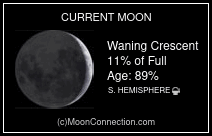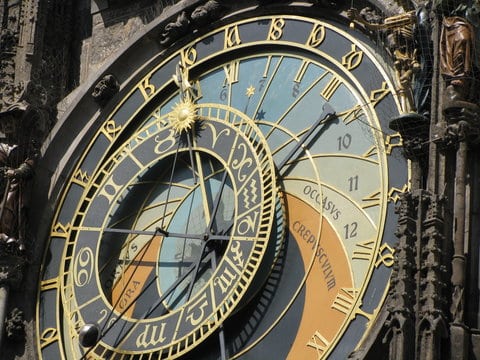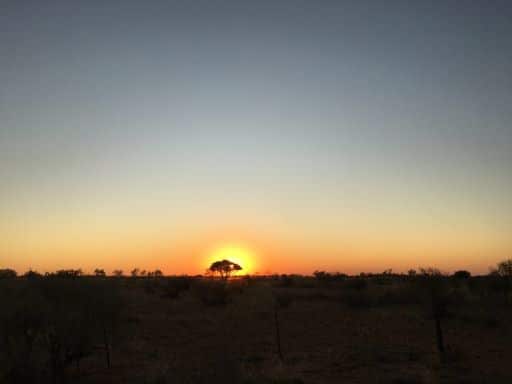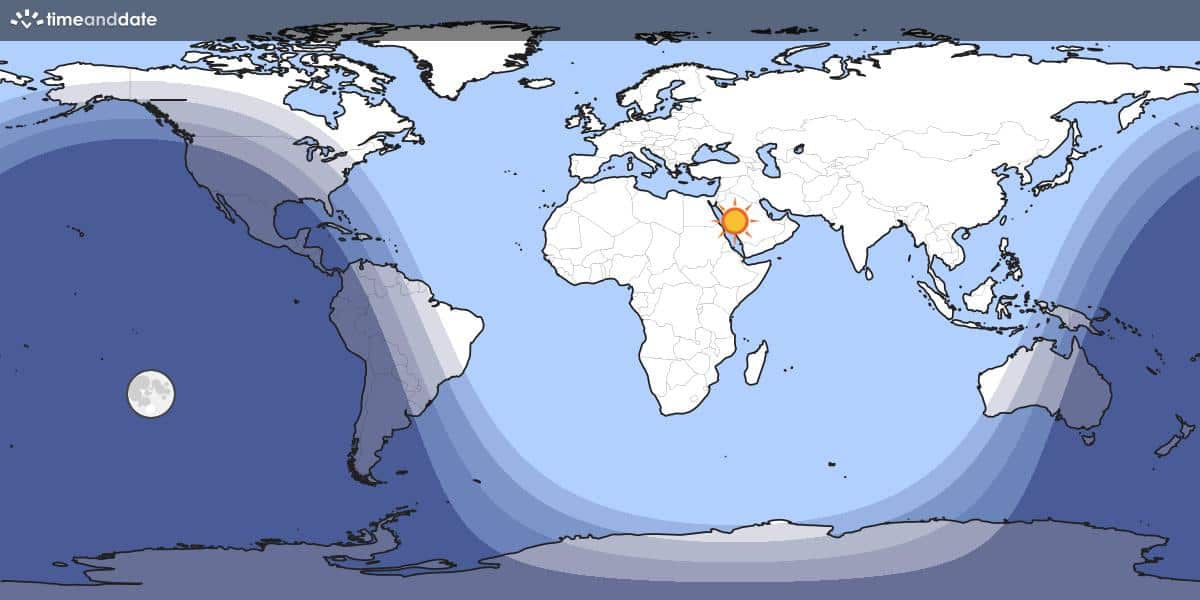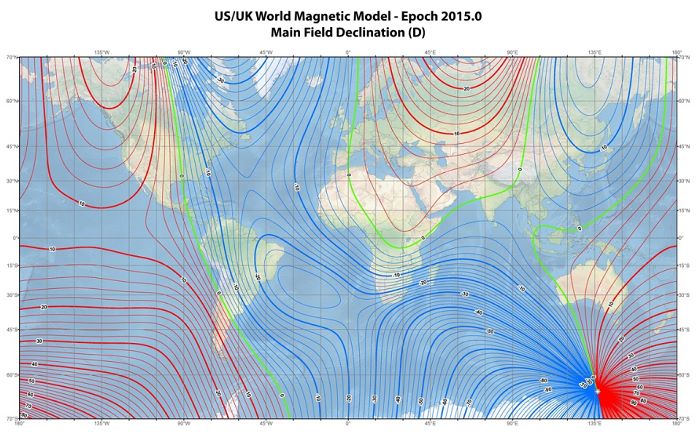Bar – Chart 1
Steve Gottlieb’s Observations
NGC 1804 = ESO 056-046 = S-L 172
05 01 03 -69 05 00; Dor
V = 11.9; Size 0.9′
24″ (11/18/12 – Magellan Observatory, Australia): very small bright knot, ~25″-30″ diameter, with four or more mag 12-14.5 stars resolved including three on a NW to SE line. Tightly packed into a very high surface brightness glow. S-L 180 lies 4′ NE.
Notes: John Herschel discovered NGC 1804 = h2742 on 3 Nov 1834 and described “F (?), R, bM (Thick haze in sky).” On a second sweep his description reads “F, S, R, 30″. Shapley and Lindsay (1963) give a diameter of 25” and remark, “few stars, partly condensed.”
S-L 180
05 01 36.9 -69 02 18; Dor
V = 13.5
24″ (11/18/12 – Magellan Observatory, Australia): fairly faint, moderately large, round, 0.5′ diameter, soft glow with no resolution. Picked up 4′ NE of NGC 1804, though not plotted on the Mati Morel Atlas. This is a relatively old cluster with an age of ~1.6 billion years.
Notes: Robert Innes discovered S-L 180 on a photograph taken with the 10-inch Franklin-Adams camera of the Johannesburg or Union Observatory. It was catalogued in the 1924 “Catalogue of Clusters and Nebulae Near the Large Magellanic Cloud” as a “small irregular nebulous patch.” In 1926, he observed it using the observatory’s 26.5-inch refractor and called it “a nebulous patch, 30″ diam, with some 11 mag stars in neighbourhood.”
Age: ~1.6 billion years, according to “Massive clusters in the LMC” (Baumgardt+, 2013)
NGC 1825 = ESO 056-053 = S-L 202
05 04 19 -68 55 36; Dor
V = 12.0; Size 1.0′
24″ (11/18/12 – Magellan Observatory, Australia): bright, very small, round, 20″ diameter, increases to a very bright quasi-stellar nucleus but no resolution. Located 3.5′ WSW of mag 8.0 HD 33477. NGC 1847 lies 15′ ESE and NGC 1804 is 20′ SW.
Notes: John Herschel discovered NGC 1825 between Nov 1836 and Mar 1837 with a 5-inch refractor and listed it as #199 in his preliminary catalogue of “Stars, Nebulae and Clusters in the Nubecula Major.” There was no description given but his position is 1.5′ NW of this LMC cluster.
NGC 1834 = ESO 056-060
05 05 12.2 -69 12 27; Dor
V = 11.8; Size 20″
30″ (10/15/15 – OzSky): bright, small, round, thin halo, just 20″ diameter, mottled but no resolution. Located 2.8′ SE of mag 9.3 HD 33487. NGC 1834 (and nearby clusters NGC 1828 and 1830) is 12′ S.
Notes: John Herschel discovered NGC 1834 = h2764 on 11 Nov 1836 and recorded (single sweep) “B, vvS, lE, uniform in light, 10″ across.” His position is 30″ S of this compact cluster. The NGC description added the query “Planetary?” On the DSS, this object appears to be an extremely compact cluster, though perhaps a brighter star is superimposed.
Eric Lindsay, in the 1964 paper “Some NGC objects in the Large Magellanic Cloud”, mentions that “A fairly bright star blended with two faint ones. Questioned as a planetary nebula in the NGC. Prism plates show a fairly strong continuum only, and it is probably an early-type star.” RNGC follows Lindsay and misidentifies NGC 1834 as a triple star. Hodge and Wright note that it “may only be a bright star in a rich field”. The ESO records it as a globular cluster (ESO 056-SC060), but gives no other details. NGC 2000.0 misidentifies this object as an asterism.
NGC 1836 = ESO 056-061 = S-L 223
05 05 35.7 -68 37 42; Dor
V = 12.2; Size 1.5′
24″ (11/18/12 – Magellan Observatory, Australia): bright LMC cluster, relatively large, high surface brightness, very elongated NW-SE, 1.2’x0.4′. The dominant portion of the cluster is on the NW end and appears bright, roundish, 25″-30″ diameter with a few stars resolved just outside the glow. A 14th magnitude star is off the SE side and BRHT 4b is less than 1′ SE. NGC 1836 forms a striking pair with NGC 1839 2.5′ E. HS 109 is 5.4′ S and several other small clusters are in the field.
Notes: John Herschel discovered NGC 1836 = h2766 on 23 Nov 1834 (along with NGC 1839 = h2768), though no description or position was given. On his second sweep (30 Dec 1836) he noted “the first nucleus of a clustering group of mixed stars and nebulosity.” His position is accurate.
H-S 109
05 05 36.9 -68 43 06; Dor
V = 12.6
24″ (11/18/12 – Magellan Observatory, Australia): picked up while viewing NGC 1836 and 1839, a bright pair of clusters 6′ N. At 200x appeared moderately bright, fairly small, irregular, 25″-30″ diameter, a few very faint stars resolved.
BRHT 4b
05 05 40 -68 38 12; Dor
Size 0.6′
24″ (11/18/12 – Magellan Observatory, Australia): a 14th magnitude star is off the SE side of NGC 1836 and connects to a small knot (open cluster BRHT 4b) containing a very tight string of 15th magnitude stars.
BRHT 4b has a similar age as NGC 1839 (~140 Myr) and perhaps a common origin. NGC 1836 is older at ~400 Myr.
NGC 1839 = ESO 056-063 = S-L 226
05 06 02.6 -68 37 40; Dor
V = 11.8; Size 1.6′
24″ (11/18/12 – Magellan Observatory, Australia): very bright cluster forming a striking pair with NGC 1836 just 2.5′ W. At 200x appears as a very high surface brightness irregular glow, ~30″ diameter, mottled but not resolved. A group of six mag 13-14 stars is off the west side in two short N-S strings. Several fainter clusters are in the field including HS 117 5′ SSE, HS 109 6′ SSW and S-L 234 6′ SE.
Notes: James Dunlop discovered NGC 1839 = D 170 = h2678, along with NGC 1836, on 25 Sep 1826. He described “a pretty large faint nebula, irregular figure [with several bright points in it].” The part in brackets was found in his handwritten notebook, but not his published catalog. Dunlop’s position was 10′ E of NGC 1839 and the next entry in his handwritten notes mentions “the preceding of the three nebulae [follows by 2 min 55 sec and 6′ S].” Close to this offset is NGC 1850, the first of three with NGC 1854 and NGC 1858, which seems to clinch the identification.
John Herschel rediscovered NGC 1839, along with NGC 1836, on 23 Nov 1834 (sweep 512) and described as “pB, irregular figure; the following of 2 [with NGC 1836] in field together.” On 20 Dec 1836 (sweep 759) he called it “the second nucleus of a binuclear clustering group of mixed nebula and stars.”
Bhatia et al. (1991) listed NGC 1836 and BRHT 4b (40″ to its SE) as a binary cluster, but NGC 1839 and BRHT have similar ages (~140 Mly) and perhaps a common origin.
H-S 117
05 06 25 -68 42 19; Dor
V = 13.0
24″ (11/18/12 – Magellan Observatory, Australia): moderately bright, fairly small, roundish, 25″-30″ diameter, involves a 14th magnitude star. Picked up while viewing NGC 1836 and 1839, a bright pair of clusters ~6′ NW. S-L 234 lies 2.7′ ESE and HS 109 is 4.4′ WSW.
NGC 1847 = ESO 056-066 = S-L 240
05 07 08 -68 58 18; Dor
V = 11.1; Size 1.0′
24″ (11/18/12 – Magellan Observatory, Australia): very bright LMC blue globular, moderately large, irregular elongated shape, high surface brightness glow with a small fainter halo, ~0.6’x0.4′. At 200x, several mag 14.5-15.5 stars are resolved (a couple are fairly easy) within and at the edges of the central glow. NGC 1825 lies 15′ WNW, NGC 1856 is 16′ SE and NGC 1855/1858 are ~15′ NE. John Herschel described a “double star in the centre” and I’m sure this refers to the two brightest central stars.
Notes: John Herschel discovered NGC 1847 = h2775 on 15 Dec 1835 and logged as “B, E, 30″, has a double star in the centre.” On a second sweep he called it “B, S, R, gradually brighter in the middle, 15″.” His position is accurate.
Joseph Turner described and sketched NGC 1847 on 18 Dec 1875 with the 48″ Great Melbourne Telescope (plate III, figure 27 in “Observations of Southern Nebulae…”): “It has a mottled appearance, the bright parts being very bright, as if consisting of very small stars. Sometimes these bright parts sparkle, but I cannot make out any distinct stars, although I feel convinced that these exist. The small star immediately south of nebula and close to it is involved in very faint nebula. Herschel’s drawing of this object is very unlike its present appearance. He describes it as having a double star in centre and his drawing also shows it so. The nebula presents altogether a more mottled appearance than indicated by Herschel’s sketch, and the two brighter parts might easily, upon an unfavourable night, be mistaken for the double star with Herschel shows in his drawing; I can however make nothing more of it than already stated. Night exquisite.”
On 19th November 1884, Baracchi noted: “Pretty large, elongated, bright patches within it, not stars. Sparkling looks as if resolvable, but not so. Agrees exactly with Turner’s drawing. Position of neighbouring stars agrees exactly with Turner. Nebula is most likely unchanged. Herschel puts a double star in it. This double star is perhaps represented now by the bright patches. It may be that Herschel’s stars have changed into diffused patches.” Both Turner and Barachhi consider the lithograph as fairly representing the object.”



